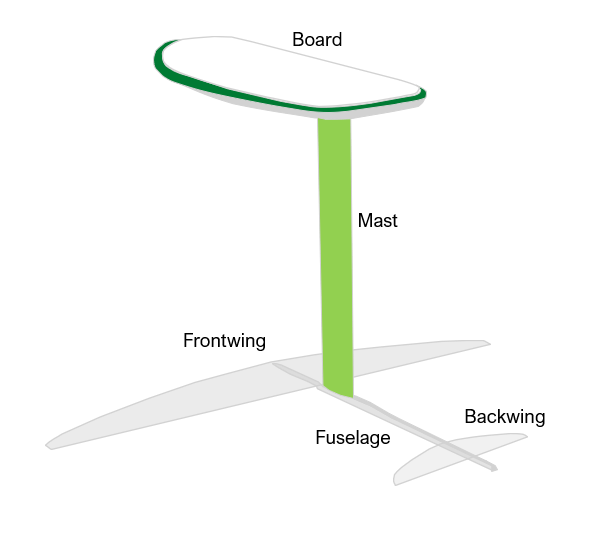“Pumpfoiling is like flying over the water – propelled only by the rider’s force”
Pumpfoiling – at a glance
Pumpfoiling – or sometimes also called Foil Pumping – makes use of a hydrofoil which creates a lift that allows to lift out the rider with his board out of the water.
When doing windfoiling, wingfoiling or kitefoiling the forward energy is gained by the wind with the help of a sail or kite. When pumpfoiling the propulsion is generated solely by the movement of the rider – the so called «pumping» movement. Once you figured out how to manage the start and how to do the pumping-moves, you actually can «fly» over the water as long as you have enough energy.
The advantage of pumpfoiling is that you are not dependent on wind, waves or even a towing boat and therefore, can pursue this sport on most waters.
Pumpfoil Setup
The basic setup of a pumpfoil is the same as the one used for wingfoiling or kitefoiling. When pumpfoiling, the pumpfoiler stands on a board, which is connected with a mast to the fuselage which holds the foil.
While pumpfoiling, the foil remains under water and generates the force to lift the rider with his board out of the water. Thereby, the foil (hydrofoil) principle is the same than the wing of an airplane.

Pumpfoil Motion Sequence
In order to generate the necessary lift, the foil must be agitated in a sinusoidal forward motion. The movement of the foil is shown schematically in the figure below.

Fig. Movement of the foil during pump foiling
In the figure above, the foil moves from right to left. Due to the flow of the water around the foil, the front wing generates lift (red arrow) and the back wing generates downforce (grey arrow). The force induced by the pumpfoiler acts on the board connected to the foil (purple arrow).
At the beginning the pumpfoiler inclines the foil downwards in the direction of travel and thus accelerates the foil. Shortly before the board touches the surface of the water, the board is brought into an upward movement again. This is done by shifting the weight and giving an impulse with the back foot on the board. The speed gained by the “dive” leads to an increased lift of the foil. Looking at the speed curve, the highest speed is reached when the foil reaches the lowest point in the sequence of movements.